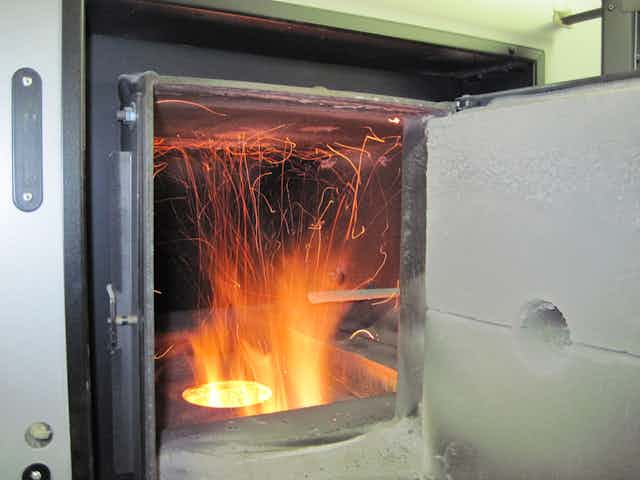Burning some wood waste from native forests will be counted as renewable energy under revisions to the Renewable Energy Target (RET) passed this week.
Environmental groups and the Greens have criticised the move as possibly encouraging the logging of native forests.
Burning wood waste was included in the Renewable Energy (Electricity) Act (2000). Under the Renewable Energy (Electricity) Regulations 2001, harvesting native forest just for energy generation was explicitly not eligible. Until 2011 some wood waste from native forest harvesting was eligible. The latest revisions reinstate some native wood waste under the legislation with the restrictions that existed until 2011.
The RET legislates that, by 2020, 33,000 gigawatt hours of electricity must be generated by renewable energy. This includes wind, solar, hydro, tidal and various bio-energy sources. The scheme works through the creation of certificates for energy generation, and the requirement for liable entities to purchase these certificates.
The latest revisions cut the RET from 41,000 GWh to 33,000 GWh and make burning wood waste from some native forest harvesting eligible for certificates under tight restrictions.
However, as recognised in the relevant legislation and as shown by developments in Europe, burning wood waste from a variety of sustainable sources offers great potential as another source of renewable heat and electricity.
How it works
Sources of wood allowed under the RET include residues from plantation, timber-processing facilities, construction waste and some native forest residues.
The recently amended legislation clearly defines eligible feedstock for energy from native forest must be a residue resulting from an existing operation producing high-value timber products.
This legislation is similar to the regulatory regime dating back to 2000 and which applied until 2011. Despite this legislative support the Bureau of Resource and Energy Economics reports that the annual average energy from wood in the ten years before and after 2000 declined from 106.9 petajoules to 99.7 petajoules.
For a number of economic reasons large-scale electricity generation from woody biomass in Australia has not seen significant uptake. It’s useful to examine briefly woody biomass energy generation here and overseas.

The European story
Woody biomass comprises the largest renewable portion of global primary energy.
While wood energy makes a small contribution to Australia’s fossil-fuel-intensive energy supply, modern wood energy plants in Europe make a large contribution in countries with ambitious renewable energy and decarbonisation targets. These include Sweden, Finland, Germany and Austria.
Most woody biomass energy systems in Europe generate thermal energy. Thermal energy can be used for household, commercial, industrial and agricultural purposes. European thermal systems can operate with very high efficiency at scales from household to supplying district heating systems and industrial steam for entire towns.
Both the authors have visited regional towns in Finland that are heated by wood in areas where temperatures may go as low as -35C. While Europe has extensive subsidies for renewable heat, there are no subsidies for woody biomass heat in Australia.
Smaller-scale thermal systems are becoming more common in Australia. Recent installations include the Beaufort Hospital near Ballarat, a public swimming pool and a number of commercial greenhouses. These community-scale systems use small quantities of wood in the range of hundreds to thousands of tonnes per year.
At this small scale, the wood can come from a variety of sustainable local sources. In addition to being a renewable energy, it can play an important role in regional development.
Heat and power from wood
Wood can be used to generate just electricity or heat and electricity in a combined heat and power plant.
Most electricity from wood is generated in Steam Rankine Cycle (SRC) plants (SRC is the technology used in most large-scale coal-fired power plants). These SRC systems are relatively inefficient at producing electricity compared to the energy stored in the wood.
This system efficiency can be greatly improved in a combined heat and power plant by making direct use of some of the heat generated. This further favours smaller installations tailored to a local need.
Large-scale SRC systems require hundreds of thousands of tonnes of wood per year. This would require expensive transportation over long distances and subjects plant operators to supply risk.
Smaller-scale SRC systems require less wood but are less efficient when not combined with heat production. SRC systems in Europe are commonly small-scale systems selling heat locally, which improves both the system efficiency and financial return.
The decentralised energy production possible with bio-energy provides significant local benefits of economic and energy resilience. If the east coast LNG export plants lead to the widely forecast increases in the cost of gas, woody biomass thermal systems will become increasingly cost-competitive.
Does it have to come from forests?
Even with the intensified deployment of bio-energy in Europe the material used for energy production is usually a residue of commercial operations to produce timber or fibre from wood.
Dedicated woodlots and short-rotation woody crops are also used to supplement European biomass supply in relatively small quantities. Some wood pellets used in Europe are manufactured from diseased or pest-affected trees in North America.
Other northern hemisphere sources of whole trees for energy such as otherwise non-commercial species are contentious and unlikely to be economically viable without large subsidies. Some commercial European energy generators have questioned this use on sustainability grounds.
Northern hemisphere experience suggests that woody biomass energy systems can make a significant contribution of low-cost, low-carbon energy using off-the-shelf, commercially available technology.

